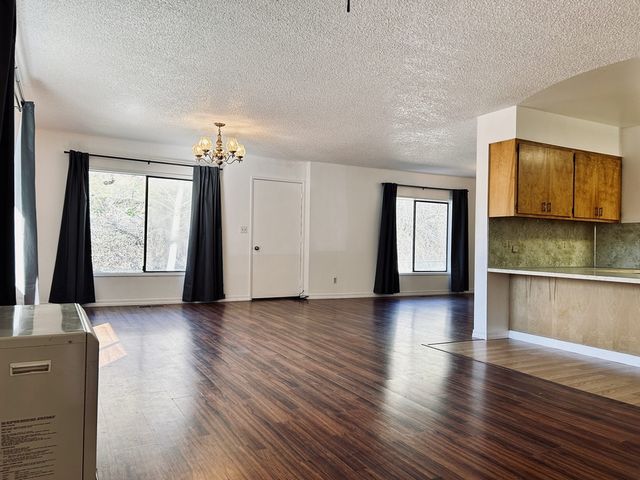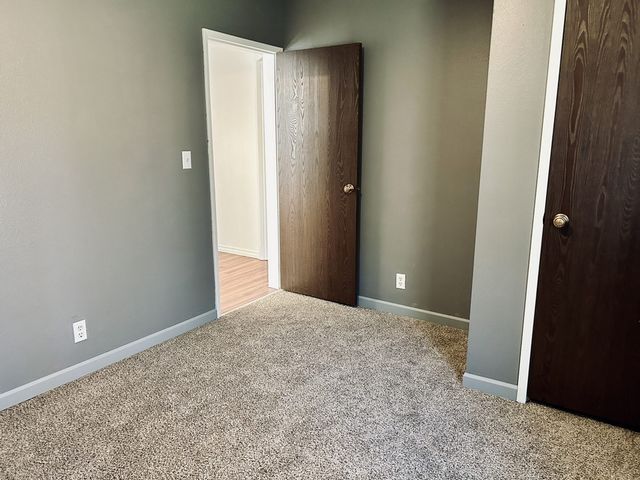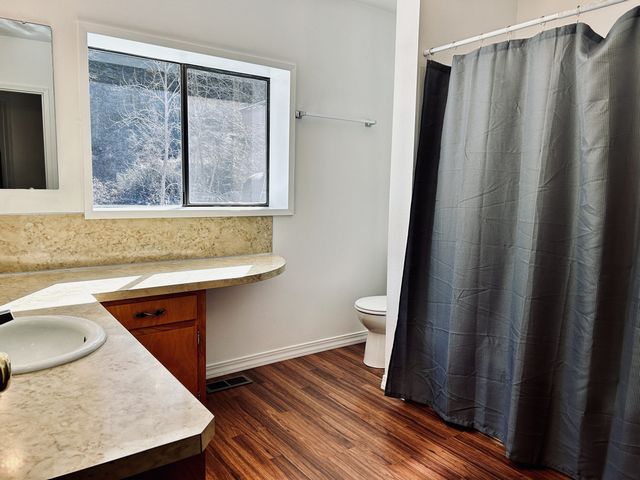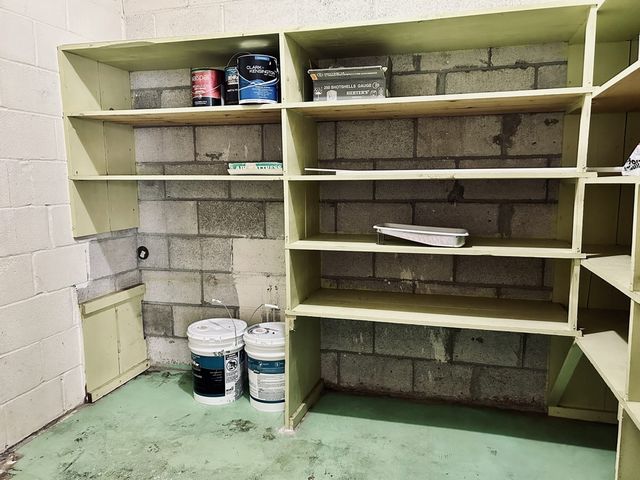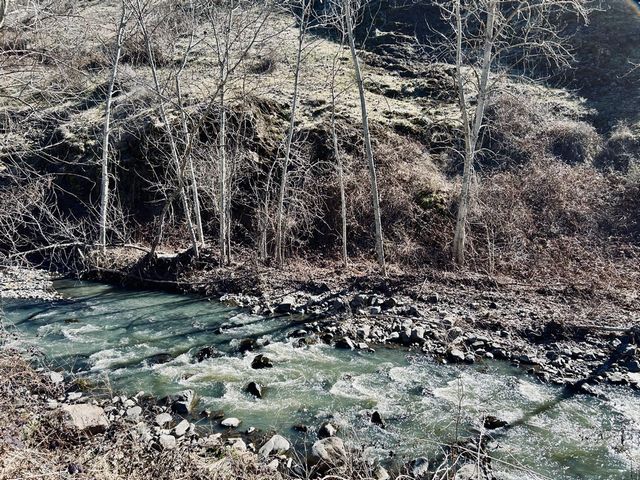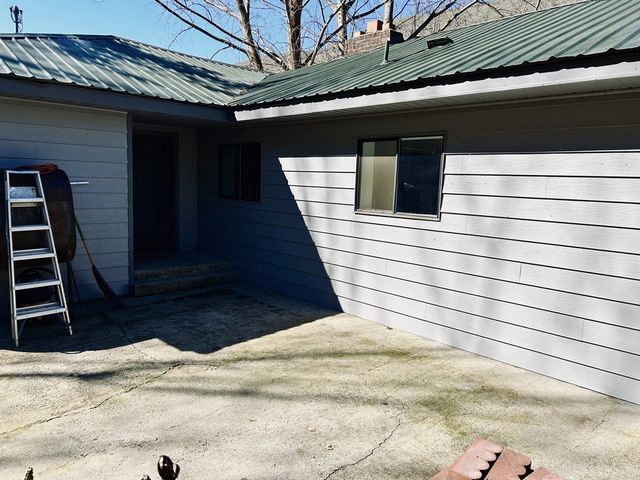CARGANDO...
Cottonwood - Casa y vivienda unifamiliar se vende
382.228 EUR
Casa y Vivienda unifamiliar (En venta)
Referencia:
EDEN-T96047714
/ 96047714
Just a couple minute drive from the Salmon River, this property offers 2,196 square feet of living space with 2 bedrooms and 2 bathrooms. This home sits on a 4+/- acres with approximately 1100 feet of creek frontage. The allure of a waterfront home extends beyond its walls, inviting residents to embrace the soothing symphony of lapping water and the breathtaking vistas that unfold beyond their doorstep. Just 10 miles south of Cottonwood, this property offers 2,196 square feet of living space with 2 bedrooms and 2 bathrooms. This home sits on a 4+/- acres with approximately 1100 feet of creek frontage. The allure of a waterfront home extends beyond its walls, inviting residents to embrace the soothing symphony of lapping water and the breathtaking vistas that unfold beyond their doorstep. Not only does this property have a beautiful home but has two outbuildings. These outbuildings can be utilized for storage, workshop area or livestock. Camas Prairie Residents enjoy their proximity to recreational opportunities particularly hunting and fishing. Hiking and Trail Exploration: Cottonwood invites avid hikers and nature enthusiasts to explore its network of scenic trails that wind through the hills and prairies. From gentle strolls to more challenging hikes, the trails cater to various skill levels. Fishing and Hunting: The nearby Salmon River, a jewel in Idaho's waterways, beckons anglers to cast their lines in pursuit of trout and other native fish species. Riverside spots and quiet riverbanks provide ideal settings for a day of peaceful fishing. Popular fishing hotspots include Winchester Lake, the Salmon River and Dworshak Reservoir. Area hunters appreciate the exceptional big game and game bird hunting at their fingertips. Winter Adventures: When winter blankets Cottonwood in snow, the town transforms into a winter wonderland. Residents and visitors alike can engage in snowshoeing, cross-country skiing, and snowmobiling along designated trails. Some local attractions for winter activities include the Cottonwood Butte Ski hill and Snowhaven Ski hill where many people enjoy skiing, snowboarding and sledding. Recreation in Cottonwood, Idaho, is an immersive experience that weaves together the town's natural beauty, cultural heritage, and close-knit community spirit. Whether exploring the great outdoors, participating in community events, or embracing the region's historical richness, Cottonwood provides a playground for those seeking a harmonious blend of recreation and rural charm. The Camas Prairie region in north-central Idaho, situated between Cottonwood and Grangeville, is an agricultural area known for its rich history of farming, ranching, and natural beauty. The Camas Prairie is a broad, flat expanse of land situated in Idaho County, between the towns of Cottonwood and Grangeville. It is characterized by gently rolling hills and expansive farmlands. The Camas Prairie supports a range of crops, including grains like wheat, barley, and oats. These cool-season crops thrive in the climate and provide staple food sources for both local consumption and broader markets. Hay production is a significant agricultural activity in the area. Farmers grow alfalfa, timothy, and other forage crops to feed livestock during the winter months. Hay is a crucial part of the local livestock industry. Livestock production is a prominent agricultural pursuit. The Camas Prairie's vast pastures offer ample grazing opportunities. In recent years, there has been a growing emphasis on sustainable agriculture and land conservation in the Camas Prairie. Farmers and ranchers often employ conservation practices to protect the region's natural resources, including water quality and soil health. Camas Prairie is a region located in north-central Idaho, USA, and encompasses parts of Idaho and Lewis counties. It sits at an elevation of approximately 3,500 feet above sea level, making it a high-elevation plateau. The climate of Camas Prairie is classified as a humid continental climate, characterized by warm summers and cold winters. The area receives an average of 24 inches of precipitation annually, with the majority falling as snow during the winter months. The region's vegetation is dominated by grasslands, with some areas of forested land in the higher elevations. The most notable plant species found in Camas Prairie is the camas flower, which is a member of the lily family and is considered a significant cultural and historical plant for the Nez Perce Tribe. Camas Prairie is also home to a diverse range of wildlife, including elk, deer, black bears, coyotes, and mountain lions. The prairie is also a crucial habitat for numerous bird species. Camas Prairie has a rich and diverse history that dates back thousands of years. The area has been inhabited by various Native American tribes, including the Nez Perce, who have lived in the region for over 10,000 years. The camas flower, which is a significant plant species in the region, was a crucial food source for the Nez Perce Tribe. The camas bulbs were harvested by the Nez Perce women and were used as a staple food source during the spring and early summer months. In the early 1800s, European-American fur trappers and traders began to explore and settle in the region, leading to conflicts with the Native American tribes. The most notable of these conflicts was the Nez Perce War of 1877, which resulted in the removal of the Nez Perce Tribe to reservations in Idaho, Washington, and Oregon. During the late 1800s and early 1900s, Camas Prairie became a center for agriculture, with farmers cultivating wheat, barley, and other crops in the fertile soil of the region. The arrival of the railroad in the late 1800s helped to further develop the region's economy, with towns such as Grangeville, Cottonwood, and Kamiah becoming important centers for trade and commerce. Today, Camas Prairie remains an important agricultural region, with farmers continuing to grow a variety of crops. The area is also a popular destination for outdoor recreation, with opportunities for hiking, fishing, hunting, and camping. The camas flower is still an essential part of the region's cultural heritage, and annual camas festivals and celebrations are held in various towns throughout the area. Cottonwood is a small city located in north-central Idaho, in the United States. The town is situated in Idaho County and is surrounded by picturesque forests, rolling hills, and scenic countryside. The nearest major airport to Cottonwood is the Lewiston-Nez Perce County Airport (LWS), which is located approximately 50 miles southwest of the city. The airport offers both domestic and regional flights, including connections to major US cities like Seattle, Salt Lake City, and Boise. Another option for air travel is the Pullman-Moscow Regional Airport (PUW), which is located approximately 75 miles to the north of Cottonwood, near the cities of Pullman, Washington and Moscow, Idaho. The airport offers flights to Seattle, Portland, and Salt Lake City. For amenities, Cottonwood has a few options for dining including C'est la V's and shopping, including two grocery stores, gas stations, a handful of restaurants, a couple coffee shops, a hospital and clinic.
Ver más
Ver menos
Just a couple minute drive from the Salmon River, this property offers 2,196 square feet of living space with 2 bedrooms and 2 bathrooms. This home sits on a 4+/- acres with approximately 1100 feet of creek frontage. The allure of a waterfront home extends beyond its walls, inviting residents to embrace the soothing symphony of lapping water and the breathtaking vistas that unfold beyond their doorstep. Just 10 miles south of Cottonwood, this property offers 2,196 square feet of living space with 2 bedrooms and 2 bathrooms. This home sits on a 4+/- acres with approximately 1100 feet of creek frontage. The allure of a waterfront home extends beyond its walls, inviting residents to embrace the soothing symphony of lapping water and the breathtaking vistas that unfold beyond their doorstep. Not only does this property have a beautiful home but has two outbuildings. These outbuildings can be utilized for storage, workshop area or livestock. Camas Prairie Residents enjoy their proximity to recreational opportunities particularly hunting and fishing. Hiking and Trail Exploration: Cottonwood invites avid hikers and nature enthusiasts to explore its network of scenic trails that wind through the hills and prairies. From gentle strolls to more challenging hikes, the trails cater to various skill levels. Fishing and Hunting: The nearby Salmon River, a jewel in Idaho's waterways, beckons anglers to cast their lines in pursuit of trout and other native fish species. Riverside spots and quiet riverbanks provide ideal settings for a day of peaceful fishing. Popular fishing hotspots include Winchester Lake, the Salmon River and Dworshak Reservoir. Area hunters appreciate the exceptional big game and game bird hunting at their fingertips. Winter Adventures: When winter blankets Cottonwood in snow, the town transforms into a winter wonderland. Residents and visitors alike can engage in snowshoeing, cross-country skiing, and snowmobiling along designated trails. Some local attractions for winter activities include the Cottonwood Butte Ski hill and Snowhaven Ski hill where many people enjoy skiing, snowboarding and sledding. Recreation in Cottonwood, Idaho, is an immersive experience that weaves together the town's natural beauty, cultural heritage, and close-knit community spirit. Whether exploring the great outdoors, participating in community events, or embracing the region's historical richness, Cottonwood provides a playground for those seeking a harmonious blend of recreation and rural charm. The Camas Prairie region in north-central Idaho, situated between Cottonwood and Grangeville, is an agricultural area known for its rich history of farming, ranching, and natural beauty. The Camas Prairie is a broad, flat expanse of land situated in Idaho County, between the towns of Cottonwood and Grangeville. It is characterized by gently rolling hills and expansive farmlands. The Camas Prairie supports a range of crops, including grains like wheat, barley, and oats. These cool-season crops thrive in the climate and provide staple food sources for both local consumption and broader markets. Hay production is a significant agricultural activity in the area. Farmers grow alfalfa, timothy, and other forage crops to feed livestock during the winter months. Hay is a crucial part of the local livestock industry. Livestock production is a prominent agricultural pursuit. The Camas Prairie's vast pastures offer ample grazing opportunities. In recent years, there has been a growing emphasis on sustainable agriculture and land conservation in the Camas Prairie. Farmers and ranchers often employ conservation practices to protect the region's natural resources, including water quality and soil health. Camas Prairie is a region located in north-central Idaho, USA, and encompasses parts of Idaho and Lewis counties. It sits at an elevation of approximately 3,500 feet above sea level, making it a high-elevation plateau. The climate of Camas Prairie is classified as a humid continental climate, characterized by warm summers and cold winters. The area receives an average of 24 inches of precipitation annually, with the majority falling as snow during the winter months. The region's vegetation is dominated by grasslands, with some areas of forested land in the higher elevations. The most notable plant species found in Camas Prairie is the camas flower, which is a member of the lily family and is considered a significant cultural and historical plant for the Nez Perce Tribe. Camas Prairie is also home to a diverse range of wildlife, including elk, deer, black bears, coyotes, and mountain lions. The prairie is also a crucial habitat for numerous bird species. Camas Prairie has a rich and diverse history that dates back thousands of years. The area has been inhabited by various Native American tribes, including the Nez Perce, who have lived in the region for over 10,000 years. The camas flower, which is a significant plant species in the region, was a crucial food source for the Nez Perce Tribe. The camas bulbs were harvested by the Nez Perce women and were used as a staple food source during the spring and early summer months. In the early 1800s, European-American fur trappers and traders began to explore and settle in the region, leading to conflicts with the Native American tribes. The most notable of these conflicts was the Nez Perce War of 1877, which resulted in the removal of the Nez Perce Tribe to reservations in Idaho, Washington, and Oregon. During the late 1800s and early 1900s, Camas Prairie became a center for agriculture, with farmers cultivating wheat, barley, and other crops in the fertile soil of the region. The arrival of the railroad in the late 1800s helped to further develop the region's economy, with towns such as Grangeville, Cottonwood, and Kamiah becoming important centers for trade and commerce. Today, Camas Prairie remains an important agricultural region, with farmers continuing to grow a variety of crops. The area is also a popular destination for outdoor recreation, with opportunities for hiking, fishing, hunting, and camping. The camas flower is still an essential part of the region's cultural heritage, and annual camas festivals and celebrations are held in various towns throughout the area. Cottonwood is a small city located in north-central Idaho, in the United States. The town is situated in Idaho County and is surrounded by picturesque forests, rolling hills, and scenic countryside. The nearest major airport to Cottonwood is the Lewiston-Nez Perce County Airport (LWS), which is located approximately 50 miles southwest of the city. The airport offers both domestic and regional flights, including connections to major US cities like Seattle, Salt Lake City, and Boise. Another option for air travel is the Pullman-Moscow Regional Airport (PUW), which is located approximately 75 miles to the north of Cottonwood, near the cities of Pullman, Washington and Moscow, Idaho. The airport offers flights to Seattle, Portland, and Salt Lake City. For amenities, Cottonwood has a few options for dining including C'est la V's and shopping, including two grocery stores, gas stations, a handful of restaurants, a couple coffee shops, a hospital and clinic.
Referencia:
EDEN-T96047714
País:
US
Ciudad:
Cottonwood
Código postal:
83522
Categoría:
Residencial
Tipo de anuncio:
En venta
Tipo de inmeuble:
Casa y Vivienda unifamiliar
Superficie:
204 m²
Terreno:
16.187 m²
Habitaciones:
2
Dormitorios:
2
Cuartos de baño:
2



